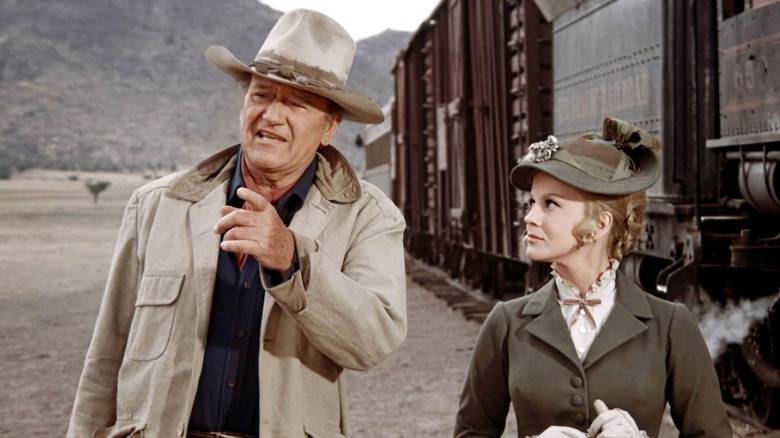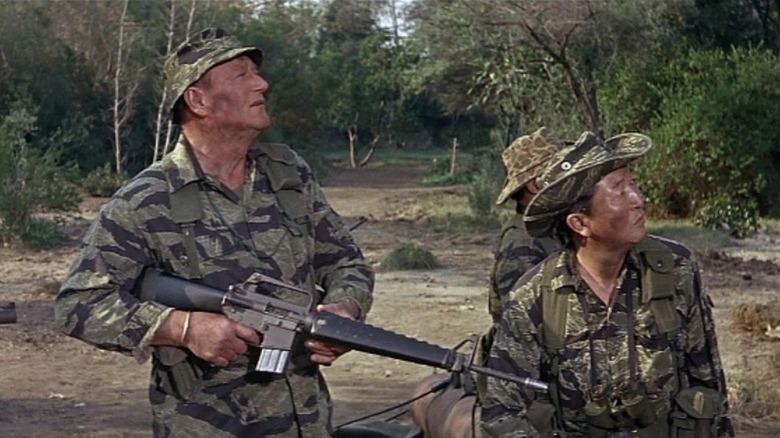How John Wayne's Early B-Movie Days Shaped His Filmmaking Philosophy
John Wayne only received credit for directing two films throughout his 50-year career, but his fingerprints are all over many of his star vehicles. Having cut his teeth during the silent era under the tutelage of masters like John Ford, King Vidor, and Michael Curtiz, Wayne became an expert in the manufacture of movies. He understood camera placement, framing, how long to hold onto a shot, and when to cut. Though it was Ford who made him a star with 1939's landmark Western "Stagecoach," Wayne is as responsible for burnishing his big-screen image as any of his behind-the-scenes collaborators.
In Scott Eyman's biography "John Wayne: The Life and Legend," the author reveals that The Duke's experience knocking out programmers for Republic Pictures taught him that the difference between a B movie and an A movie was the "difference ... between a quick punch to the jaw and the expression on a face." And while Wayne honed his craft on the former type of film, his preference was for a more thoughtful type of picture.
The auteur theory, according to John Wayne
Wayne was a man of many contradictions, and none is more striking than his stated belief in the autonomy of the director. Eyman quotes the star as saying:
"One man should serve as producer and director. Making a film is like painting a picture. If you were having your portrait painted, you wouldn't have one artist do your eyes, another your nose and still a third your mouth. That's why I think, as nearly as possible, production control should be centered in the talents of a single individual."
This is difficult to square with Wayne's penchant for overruling many of his directors by altering the staging or changing an angle, but you cannot argue with the results. While this meddlesomeness speaks to a surfeit of ego, Wayne was not precious when it came to ownership of an individual scene. "Give the scene to whom it belongs," he said, "Even if it's an extra. If I call a guy a bad name the audience is not interested in my reaction, which is already known, but his. So give him the camera angle."
'Some fine action'
Some of the films Wayne made without the likes of John Ford or Howard Hawks could be a tad formulaic, but he believed deeply in nourishing the audience with more than momentary sensation, saying, "You go to a good track meet and see some fine action; you're amused for the time being, but the effect doesn't stick with you. A conversation with George Bernard Shaw, on the other hand, will."
I would not place, say, "The Green Berets" in the league of conversing with the man who wrote "Pygmalion," but Wayne definitely took pains to spice his films up with uncommon character flourishes (this may not apply to his portrayal of Genghis Khan in Dick Powell's godawful "The Conquerer"). Wayne cared a great deal about his fans, and worked hard to give them more than just a paycheck performance. This grew harder for him to pull off late in his career, particularly as he battled the cancer that would take his life in 1979, but a John Wayne picture always had a different degree of gravitas than other movies. They could be silly or downright embarrassing, but they were, inside and out, Wayne's films.


